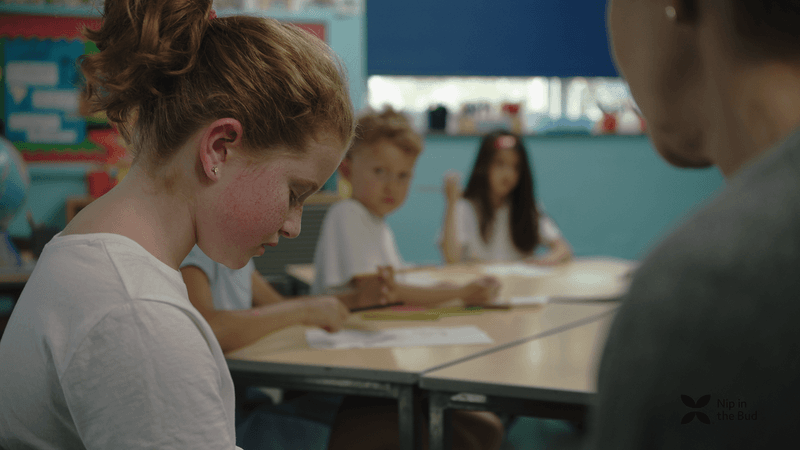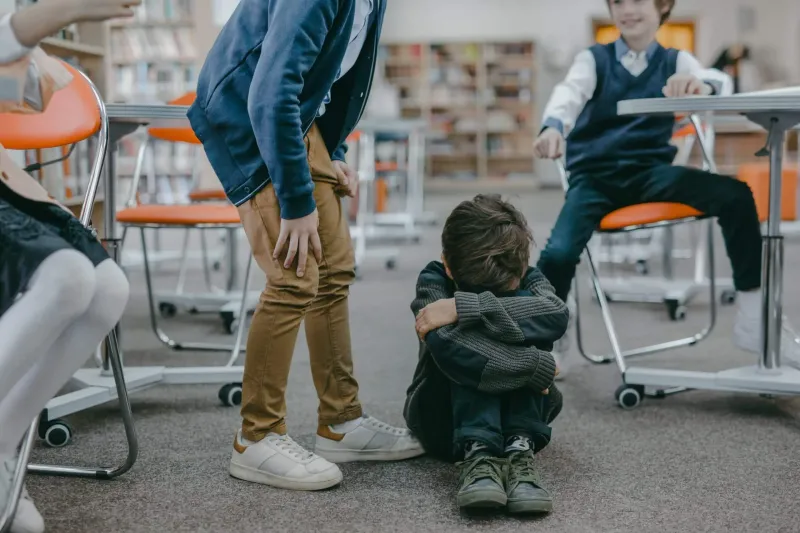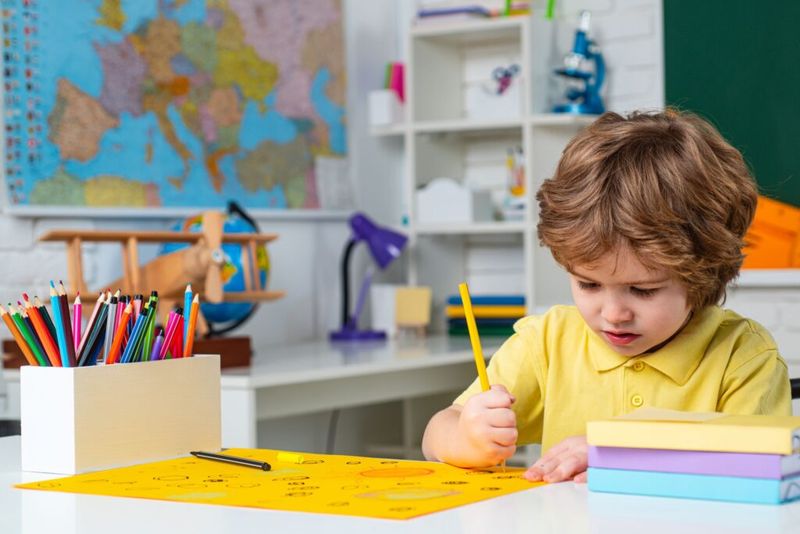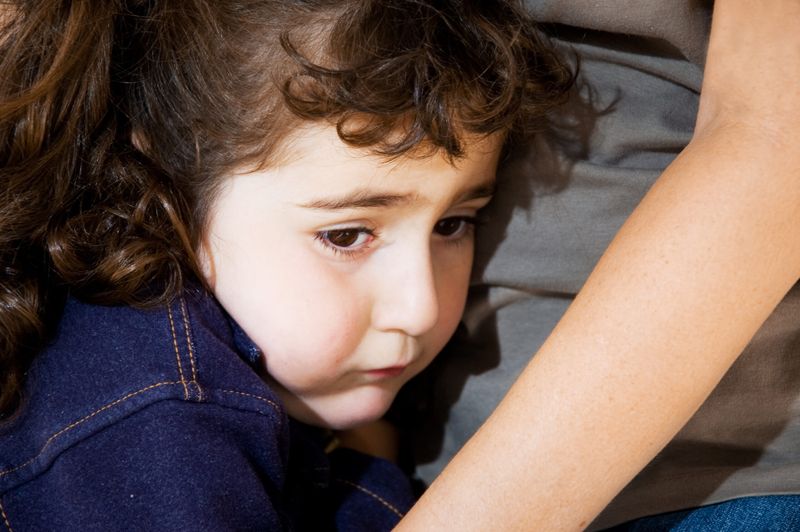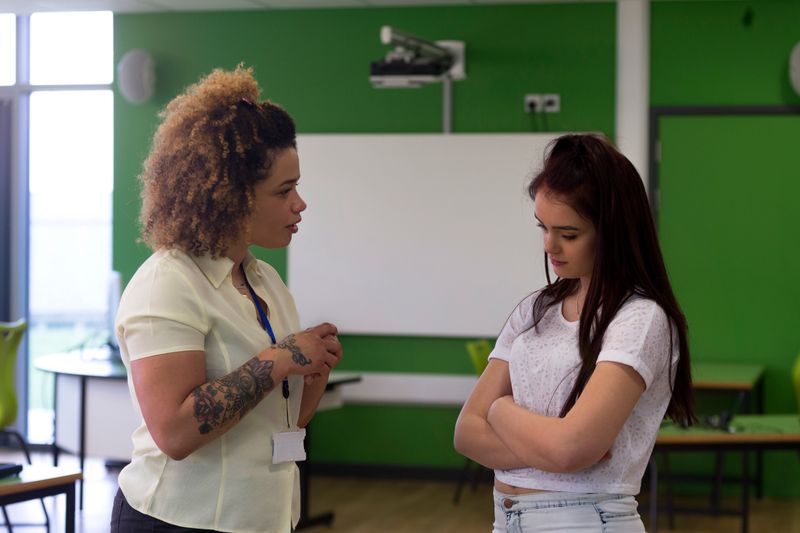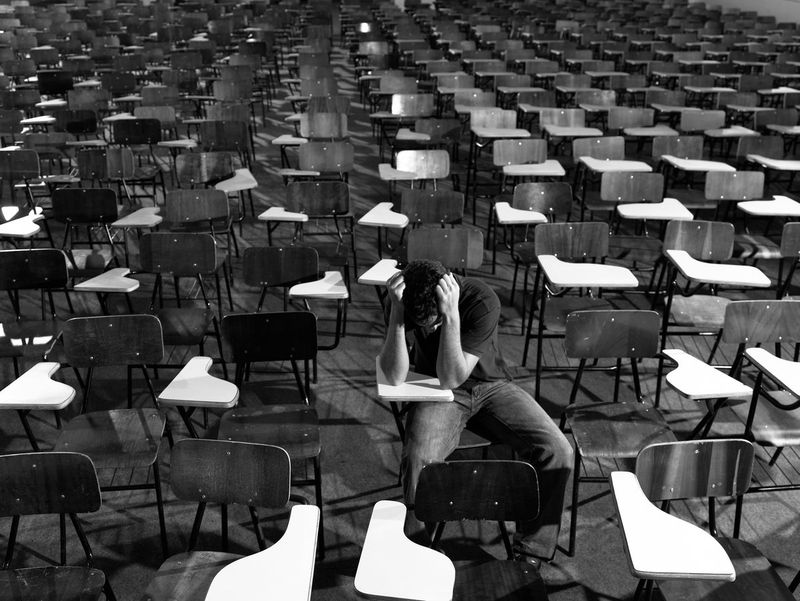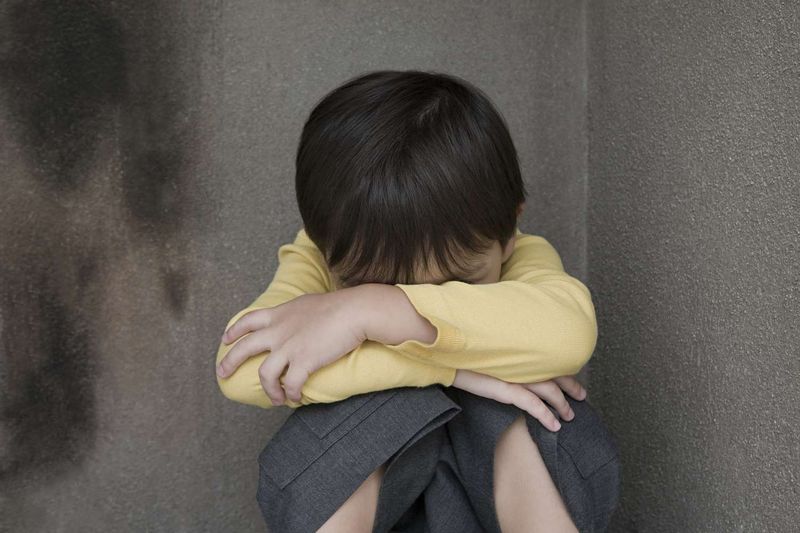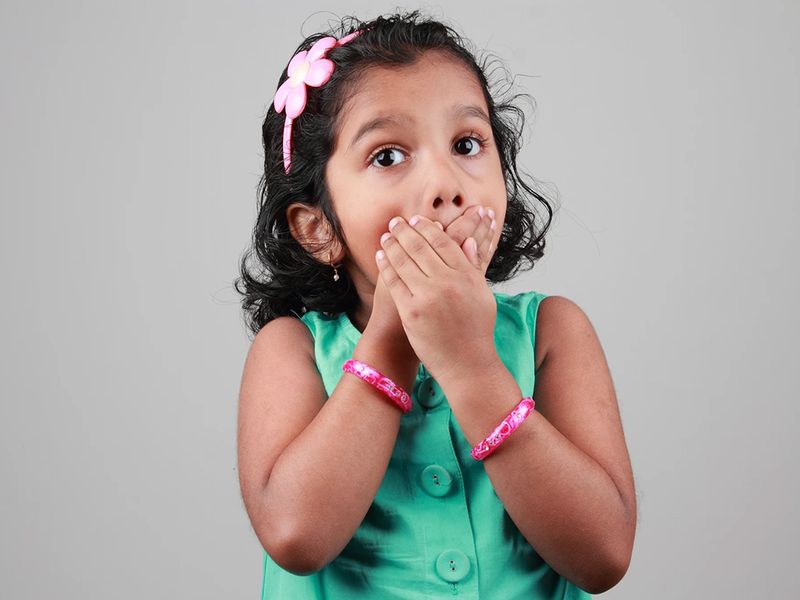You know that look teachers get when a kid does something in class that makes everyone else freeze? It’s not shock—it’s recognition. They’ve seen it before.
Behind every eye roll or sudden outburst, there’s usually a story that started long before the first day of school. Some of these signs are subtle. Others are as loud as a slammed locker.
Either way, these moments stick out because they hint at something deeper—something about how that kid was taught to move through the world, or maybe, how they weren’t.
1. Chronic Lying
Ever had a kid spin a wild story about why their homework wasn’t done—then change it up the next day? Chronic lying isn’t about the homework. It’s about survival. Some kids learned early that the truth didn’t get them anywhere, so they stopped trusting it would set them free.
You see it when they scramble to cover the tiniest mistake, or when their stories get more complicated every time you ask a question. It’s not just dishonesty; it’s a shield. For teachers, it’s exhausting, but for the kid? It’s a habit built on fear, not defiance.
If you look closer, these kids flinch under scrutiny. They scan your face for anger, calculating the safest answer. The saddest part? Sometimes, the world at home taught them that the truth isn’t safe, and they’re just bringing that lesson to your classroom, hoping it’ll protect them one more day.
2. Unexplained Aggression
Nobody wants to believe a nine-year-old is angry at the world, but sometimes it feels that way. When a kid lashes out—kicking chairs, slamming doors, shoving classmates—people whisper about “bad behavior.” They rarely ask what happened before.
Unexplained aggression is never random. Sometimes, it’s a message: “I don’t know how to get help, so I’ll make sure you notice me.” It’s clumsy, loud, and it scares the other kids. But it’s also heartbreakingly lonely.
Kids who learned to fight first and ask questions later didn’t just wake up that way. Someone, somewhere, taught them that anger gets more attention than sadness. Teachers see the cost, but the real pain lives under the surface, where no one ever asks what the rage is hiding.
3. Excessive Absenteeism
There’s always that one desk—empty more days than not. At first, you tell yourself it’s just a bug or a family emergency. But after the third week, you know it’s bigger than that. A kid who’s missing from school is missing from more than math.
Teachers see it as a blinking red light, an SOS masked as a sick day. It’s not just about truancy; it’s about what’s happening behind closed doors. Sometimes, absenteeism is a symptom of chaos at home—no routine, no support, maybe even no one to wake them up.
When a child keeps vanishing, they’re often hiding from something they can’t fix. It leaves a classroom shaped hole, and the longer it goes on, the harder it is for them to find their way back, both academically and emotionally.
4. Inappropriate Social Behavior
Ever watch a playground scene where one kid just can’t read the room? Maybe they blurt out secrets, or stand too close, or laugh when everyone else is silent. These are the kids who didn’t get the unwritten rulebook.
Inappropriate social behavior isn’t about being weird—it’s about missing out on the practice most of us take for granted. A child who struggles here might have grown up with adults who didn’t model boundaries or empathy. Or maybe they never got the gentle correction that turns “awkward” into “acceptable.”
Teachers don’t judge—at least, the good ones don’t. They see a kid trying to connect with everyone in the only way they know how, even if it sometimes pushes people away. Underneath the awkwardness is usually a wish to belong, plain and simple.
5. Lack of Basic Skills
You wouldn’t think tying shoes or using a fork could break your heart, but it can. When a kid is eight or nine and still fumbles with basic things most kids mastered years ago, it’s not laziness. It’s neglect, plain and simple.
A classroom isn’t where you should have to learn how to zip a jacket or use a napkin. But for some kids, no one ever took the time at home. These aren’t just small misses—they’re signals that a child’s needs fell through the cracks.
It’s humbling, and a little infuriating, to watch a child struggle like this. Sometimes, you’re the first adult to notice. Sometimes, you’re the first adult to care.
6. Poor Hygiene
The smell hits before the story ever gets told. Poor hygiene shows up as greasy hair, dirty nails, or yesterday’s shirt worn for the third time. Kids notice. So do teachers.
It’s not about having the newest sneakers or a perfect ponytail. Sometimes, poor hygiene means no one at home is watching—or maybe, no one has the strength to care anymore. For some teachers, it brings back memories of their own hard days. For others, it’s a call to action.
What’s painful is that kids don’t become invisible just because they try. They know they stick out. The shame clings, and sometimes, so does the smell.
7. Excessive Clinginess
Have you ever tried to peel a child off your leg while teaching multiplication? Excessive clinginess goes beyond “teacher’s pet.” It’s survival mode. Some kids cling because the grown-ups they trust keep disappearing.
Teachers feel it most in transitions—lining up for recess, handing out worksheets, or saying goodbye at the door. Sometimes, these kids seem starved for attention, desperate for a steady anchor. Underneath, there’s usually a story about loss or instability.
Their grip isn’t just physical. It’s emotional. You can teach fractions, but you can’t fill the hole left by a parent who left, or never showed up at all.
8. Difficulty Accepting Authority
Some kids bristle at every rule. The eye roll. The muttered “whatever.” The refusal to even try. It’s easy to label this as attitude, but it usually runs deeper than that.
When respecting authority feels optional, it’s often because the adults in their life never earned it—or kept breaking their own rules. These kids push back, not just because they can, but because they learned early not to trust anyone in charge.
Teachers see the difference between a kid having a bad day and a kid who’s learned to challenge every boundary. One is a mood. The other is a worldview shaped by disappointment.
9. Withdrawal from Peers
There’s always a kid who hangs back, skirting the edge of every group. Not shy, not uninterested—just pulled back, like there’s an invisible wall. Teachers notice the way these kids drift through the day, barely making ripples.
It’s more than introversion. Withdrawal from peers can be a survival skill, a way to stay safe. Sometimes these kids learned that getting close means getting hurt, so they don’t risk it anymore.
Their silence isn’t empty—it’s heavy with things they’re not saying. When a teacher sees this, they know to tread softly. Sometimes, just sitting nearby is the best way to say, “You’re still part of this.”
10. Inconsistent Academic Performance
It’s not just a bad test. One week, a kid turns in the best essay in the class. The next, they can’t finish a worksheet. This kind of whiplash isn’t laziness or lack of brains—it’s instability talking.
Inconsistent academic performance can signal a life that’s endlessly unpredictable. Maybe someone at home is sick, maybe meals are skipped, or maybe sleep happens on a stranger’s couch. When home is chaos, schoolwork becomes collateral damage.
Teachers don’t just see grades—they see patterns. And when those patterns zigzag without warning, it’s usually a sign that a child is carrying a lot more than a backpack.
11. Exhibiting Fear of Going Home
There’s a certain kind of dread that seeps into a kid when the clock nears three. You see it in the way they stall—asking for extra help, offering to erase the board, pretending to look for something in their desk. Anything to avoid the walk to the bus.
Fear of going home isn’t just about missing a favorite TV show. Sometimes, it’s about what’s waiting on the other side of the front door. Teachers catch it in the eyes, in the nervous jokes, in the way some kids always want one more minute in the safe light of the classroom.
No worksheet or pop quiz can fix that kind of fear. It sticks, long after the bell rings.
12. Unusual Knowledge or Behavior
Ever hear an eight-year-old casually mention credit scores or relationship drama? It stops you cold. Kids who drop adult topics into playground conversations didn’t pick it up from cartoons.
Unusual knowledge or behavior often points to a world where kids are forced to grow up too soon. Maybe they overhear fights at home, or get pulled into adult problems. Instead of hiding behind childhood, they carry the weight of things they never chose.
For teachers, it’s jarring. You want to give them the freedom to just be kids, even for a few hours a day. Sometimes, all you can do is listen, and try to lighten the load they never asked to carry.
13. Falta de empatía
Empathy isn’t automatic, but it is taught. So when a kid shrugs off a friend’s tears, or laughs at someone’s pain, it says something about the world they’ve seen. Maybe no one showed them what kindness looks like.
Lack of empathy isn’t just rudeness—it’s a missing piece of being human. Teachers spot it in the small moments: the unshed apology, the joke that goes too far, the refusal to help. It hurts more than you think.
The good news? Empathy can be learned. But first, someone has to care enough to notice what’s missing.
14. Overly Mature or Inappropriate Language
You never forget the first time a ten-year-old swears like a sailor in class. Or when they mimic adult sarcasm that makes even grown-ups uncomfortable. That kind of language doesn’t come from playgrounds—it seeps in from grown-up spaces kids shouldn’t have to visit.
Overly mature or inappropriate language is a red flag for exposure to adult content or chaotic environments at home. It’s more than just words; it’s a window into what they’ve heard, seen, and learned to survive.
Teachers hear it and flinch—not just at the language, but at the loss of innocence that came with it. Sometimes, the hardest lessons aren’t the ones you teach, but the ones you can’t unhear.
15. Self-Harm or Talk of Suicide
Nothing prepares you for the moment a child talks about wanting to disappear. Self-harm or talk of suicide in a classroom isn’t drama—it’s a cry for help. Sometimes the scars show. Sometimes, it’s just in the silences that stretch too long.
Kids who hurt themselves aren’t looking for attention the way adults think. More often, they’re desperate for relief—from pain, from chaos, from feeling invisible. Teachers spot the warning signs: long sleeves in hot weather, sudden withdraw, or quiet, chilling whispers.
You never forget these confessions. They’re heavy, terrifying, and all too real. And every single time, it means something in this kid’s world went so wrong, they can’t see another way out.


